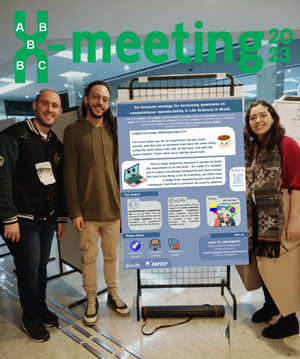Scenario 1: Susan, trapped in an abusive lab, wanted to move out and applied for other research positions. To avoid any hassle, she listed her current PI as one of the referees. Despite his assurance of writing ‘very nice letters’ for her, he was instead sabotaging her by sending bad letters. Susan was devastated for not receiving further communications from her interviewers, although she performed astutely well with her interviews. She was not aware of her situation, until one employer stepped in to notify her about that one ‘bad reference letter’ from her current employer.
Scenario 2: Sophie, a freshly minted PhD, sent out applications for postdoc positions and felt incredibly excited. She was over the moon when she received responses from her dream research institutions. Potential employers asked for three reference letters to proceed with the interview. They received two, but the third one never came. Sophie grew anxious as all her applications were unsuccessful, so she eventually joined the lab of the third referee. Soon she realized the conflict of interest: her current employer purposely sabotaged her applications to hire her.
There are thousands of scenarios like the ones above, that harm the academic paths of early career researchers. All you need is one, and only one, negative and/or false reference letter to change the game and turn an ECR’s life upside down. Unfortunately, a researcher's academic career trajectory is irrationally dependent on reference letters, from PhD admission to tenure and beyond. A scientist's likelihood of promotion is deeply grounded in the nice, promising words from several referees throughout their career path. In contrast, if an ECR decides to change career paths and interviews for a position in industry, they are rarely asked to provide a reference contact.
A ‘reference letter’, written to support the career ladder, is supposed to emphasize one’s strengths: passion, enthusiasm, independence, and collaborative character of the trainee. It highlights how the candidate’s journey makes them unique: an important trait, resilience during difficult times, scooping of their project, medical conditions, a mentor's untimely passing, or other life situations which are not mentioned in one's CV.
Reference letters as a possible tool for abuse:
Writing and reading reference letters uses up an extraordinary amount of time on both ends. For instance, 100 applicants for a single job advertisement will yield 300 letters, or roughly 600 pages of reading. Such immense reading load is difficult to tackle, and most of these letters actually remain unread. It’s a superficial notion that a good reference letter will rule out the possibility of having a bad researcher, but we continue to rely on this "truth".
Reference letters have historically been used to eliminate ‘fumy’ people from academia. However, what if the ‘fumy’ person is an out-spoken victim of abuse by a supervisor, accused a supervisor under Title IX, a whistleblower of research misconduct, a prominent voice in work-life balance, etc.?
In such cases, the letter is unlikely to accurately reflect the candidate’s personality, strengths, or fit for the job they are applying for. On top of this, the letter allows a possible abusive situation to extend into the hiring process, effectively trapping the scientist.
Letters are focused on a candidate’s personal information and are susceptible to subjective interpretation by the letter writer, so a writer’s possible bigotry may breeze in. In addition, the trainee must also request and remind their supervisors for days or months to send out the letter - even if it is only a single one. This is not only a waste of time on both ends, but it also creates a power imbalance that could put the trainee in a holding pattern. Although the letter is supposed to play an important role in promoting the career of a trainee, unfortunately, in many instances the scenario is completely opposite. In fact, many abusive supervisors are exploiting their power by writing negative and/or false letters, creating an undeserved bad reputation for their targets.
So, what could be the possible reasons for writing bad letters?
Academia rewards ‘obedience’ and ‘praise’. Going against a PI’s opinion, standing up to any misconduct, not being submissive, failure of a project. These are only some of the reasons that could end up in a bad letter. In contrast, saying “YES” to everything the abusive PI says may be the only way for the trainee to get a good letter. What if the abusive PI is reluctant to support the career of researchers because of their specific gender, ethnicity, or race? According to several studies, women are significantly less likely to receive excellent letters than their male counterparts. Unfortunately, women are usually stereotyped or sketched with fewer ‘standout’ adjectives in such letters. So, maintaining such a biased system in today’s fast paced era is truly troubling.
Re-evaluating bad letters:
How can we properly interpret, and re-evaluate bad letters, then? Talking to former colleagues of candidates sounds reasonable, but toxic environments can also lead to a form of Stockholm Syndrome for the trainee. Abusive PIs are also often masters of spreading negativity about the trainee, hence colleagues are largely unaware of the actual situation.
Further, a bad letter creates different plausible questions. What if the PI themselves were trained in an abusive lab and acquired the negative traits in their personality? The history of the bad letter writer could provide information about whether they have been abusive, accused by Title IX, have a history of research misconduct, etc. With the advent of online venues such as blogs and Twitter we can now check the reputation of a bad letter writer. If there is any (virtual) trace of potential abuse to former trainees, we should consider it as a red flag for the supervisor, not the applicant. To justify the bad letter, the interviewer/hiring manager may request two additional reference contacts to have a perspective. This might play as an empathetic evidence to support that bad letter.
Perhaps now is the time to ask: what is the point of reference letters if they sustain and promote toxic behavior at a distressing rate in academia? We need to evaluate whether we should get rid of the reference letter from the academic system. The muddy internal politics of ‘confidential letters’ seems to be a retaliation weapon for many abusive PIs and gives them too much power over their trainees. It’s a rigged, biased system and a waste of time for PIs that neither advances science, nor an ECR's career. One bad letter can overshadow the other two good letters. On the other hand, such letters are not very useful if every candidate shows up with the same template letter and generic positive comments.
So, what should we do instead?
A junior faculty seeking promotion can be evaluated by the number of alumni (check the race and gender) of their lab, doing good science somewhere else—which shows the direct relationship of that PI’s mentorship rather than a reference letter.
We are proposing a different approach to help evaluate the merit of a researcher without reference letters: request only the CV and two reference contacts from the candidate. If you would like to know more about the personality of a candidate, talk to them in person, try to understand their nature, ability, and perception from their talk. Their CV should provide a lot of information about their achievements. Their personality can be further judged by talking to the people they worked with: the reference contacts. These can be previous colleagues, students, postdocs, PIs from the neighboring labs, etc. These contacts can provide genuine, sincere endorsements about the candidate, whom you are interviewing and interested to hire. Candidates may submit an ‘open letter’ or a record of the work ethics about their own research journey or life situations during the training phase which could be endorsed by PI and signed by colleagues and trainees. Future proprietors should take all those comments into consideration to make a final-candid judgment about a candidate rather than evaluating a piece of deed.
We need to think out of the box and re-consider such old-fashioned evaluation systems that diminish our abilities, confuse our perception, and jeopardize our academic careers. Let’s get rid of such toxic evaluation from the entire academic system and set our judgment inclusive.
Cover Image by Gerd Altmann from Pixabay
About the authors:
Ruchika Bajaj is a membrane protein biologist. She is interested in understanding structure-functional relationships in membrane proteins and their interactions in the context of physiological processes and diseases. Connect with Ruchika on Twitter.
Rio Sugimura is an organoid engineer. He is a PI at University of Hong Kong and the Centre for Translational Stem Cell Biology. His lab studies cancer immunotherapy and the tumor microenvironment. Connect with Rio on Twitter.
Suhaila Rahman is a biochemist/structural biologist focusing on solving the structure of proteins and understanding their function. Beside her research, she is interested in science communication and improving the research culture in academia. Connect with Suhaila on Twitter.
About ecrLife:
We welcome comments, questions and feedback. Please contact us at ecrlife [dot] editors [at] gmail [dot] com.
Would you like to share your own story, insight or opinion? Pitch us here.
Follow us on Twitter or LinkedIn to stay up to speed with our latest news and blog post releases.







